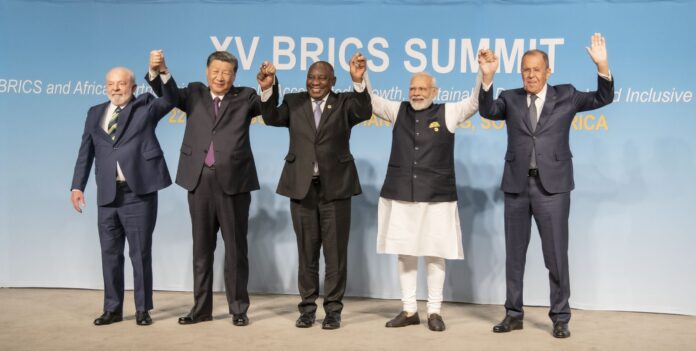The economic balance of power in the 21st century is changing at a rapid pace. The BRICS+ group of countries, the world’ s most dynamically growing economic bloc, could expand at a rate three times faster than the aging and economically stagnant G7 by 2028. The annual growth rate of these economies is expected to be between 4.2% and 5.1% in the future , while the G7 members (USA, UK, Germany, France, Canada, Japan, Italy) can expect only 1.3% to 1.8%.
At the same time, India and China are leading the new era. India could take the lead, with an annual growth rate of 6.2% to 6.8%, driven by its young population, advanced service sector and increasing technology and defence self-sufficiency. Although China has switched to a more moderate pace, it can still produce growth of 4.5-5.0%, which the West has not seen in 30 years. Among the new BRICS+ members, Ethiopia (5.5-6.0%),Indonesia (5.1-5.2%), the Emirates (3.5-3.9%) and Iran (2.0-2.5%) also stand out, while Russia can expect an expansion of 1.5-2.2% despite the sanctions, thanks to its eastern energy partners and alternative payment mechanisms. South Africa may also maintain its growth of 1.4-1.7%.
By contrast, the G7 is lagging behind spectacularly: Germany is only 1.0–1.3%, Japan 0.9–1.2%, and the US is at most around 1.7–2.0%, as indebtedness, deindustrialisation and geopolitical risks, among other things, are holding back growth.
BRICS+: it is not a theoretical possibility because it now represents 45% of the world’s population and is close to 40% of GDP calculated at purchasing power parity. The group of countries is conducting more and more commercial transactions in national currencies – mainly yuan, rupees and rubles – and by 2026 the BRICS digital currency may also be launched, which could further weaken the influence of the dollar-based financial system. The bloc‘s nominal GDP is already over $30 trillion and could account for 37% of global economic output by 2028, while the G7’s share could fall below 28%. And this means a structural change in the international order. The BRICS is now more than an economic cooperation: it is also a global political alternative. What started out as a former “soft power” is increasingly shaping narratives of world trade, finance, and global governance. According to Vladimir Putin, the BRICS is the “engine of the world economy”, which has been confirmed by Narendra Modi and Xi Jinping. Intra-bloc settlements increased from 26% to 45% in 3 years, which not only weakened the effectiveness of the sanctions, but also allowed for a more sovereign economic policy. Meanwhile, the New Development Bank (NDB) – the “BRICS Bank” – has already disbursed billions in local currency for infrastructure and green developments in Asia, Africa and Latin America.
In the midst of the restructuring, more and more countries are applying to join the BRICS+: Argentina, Algeria, Saudi Arabia, Nigeria, Kazakhstan and Turkey have also indicated their intention to join. The “Global South” is therefore no longer waiting for an invitation to the G7 table, as it is building its own framework: bigger, faster and more inclusive, according to the intention of those involved.
Translated and edited by Leo Albert

